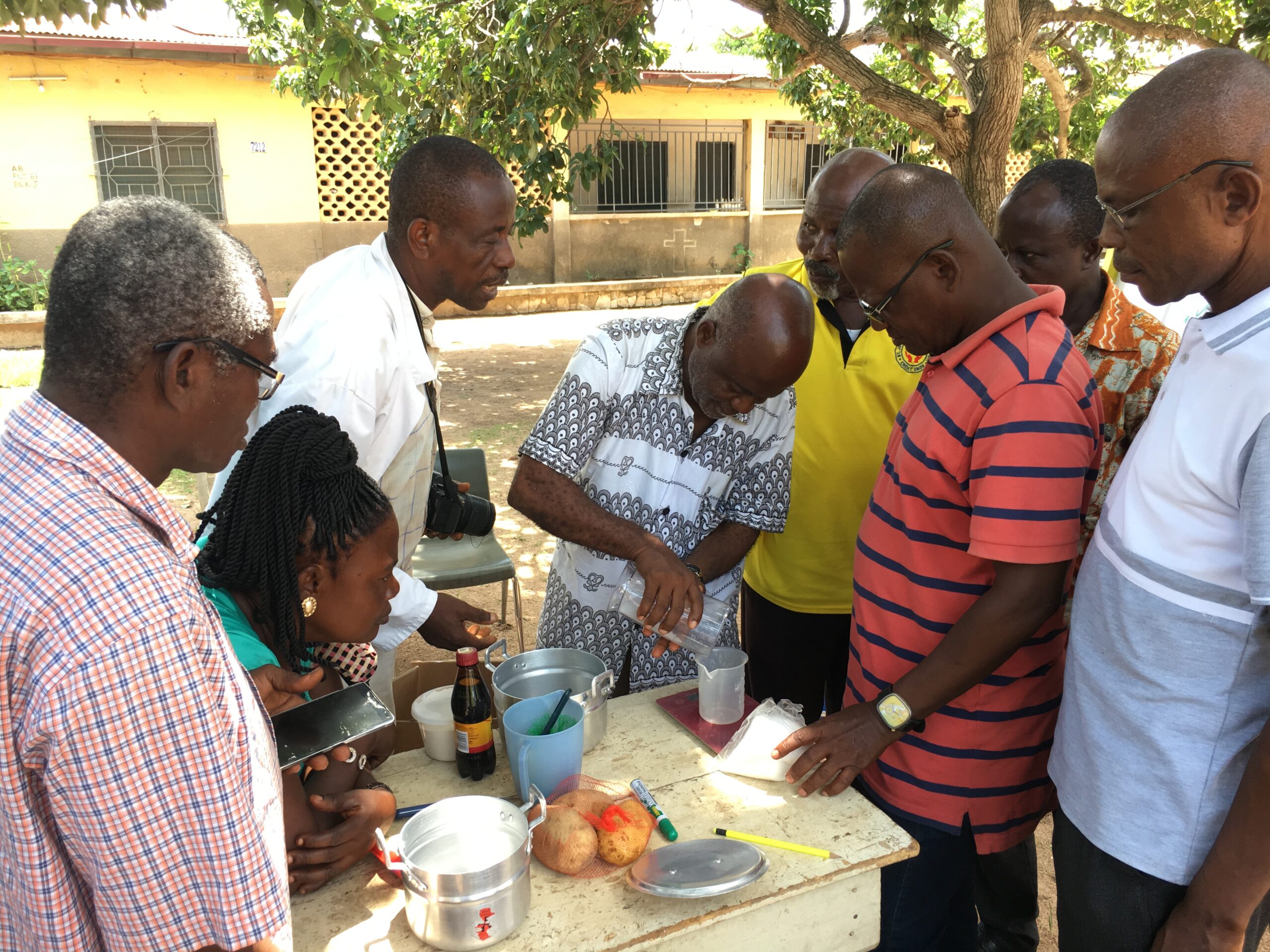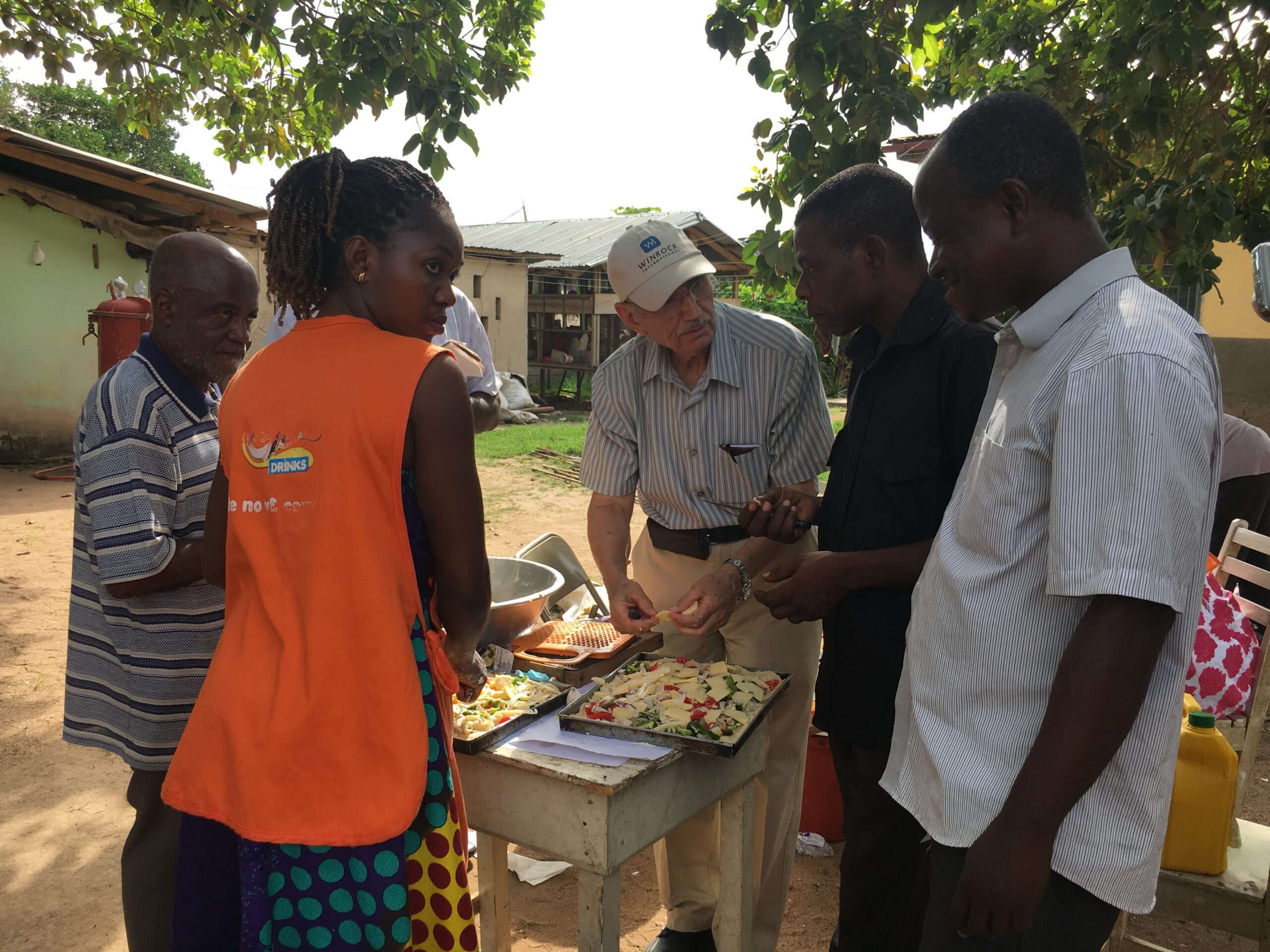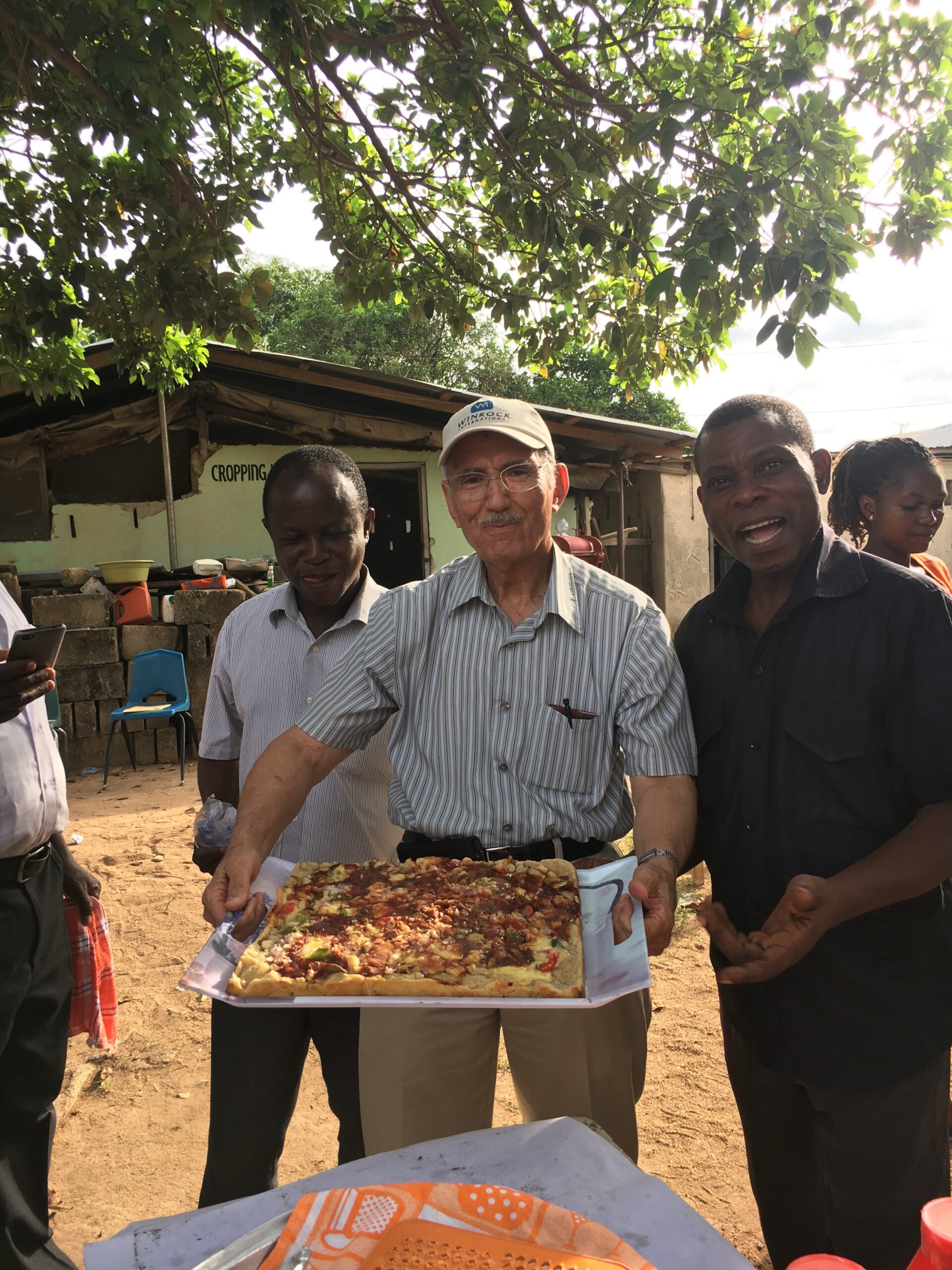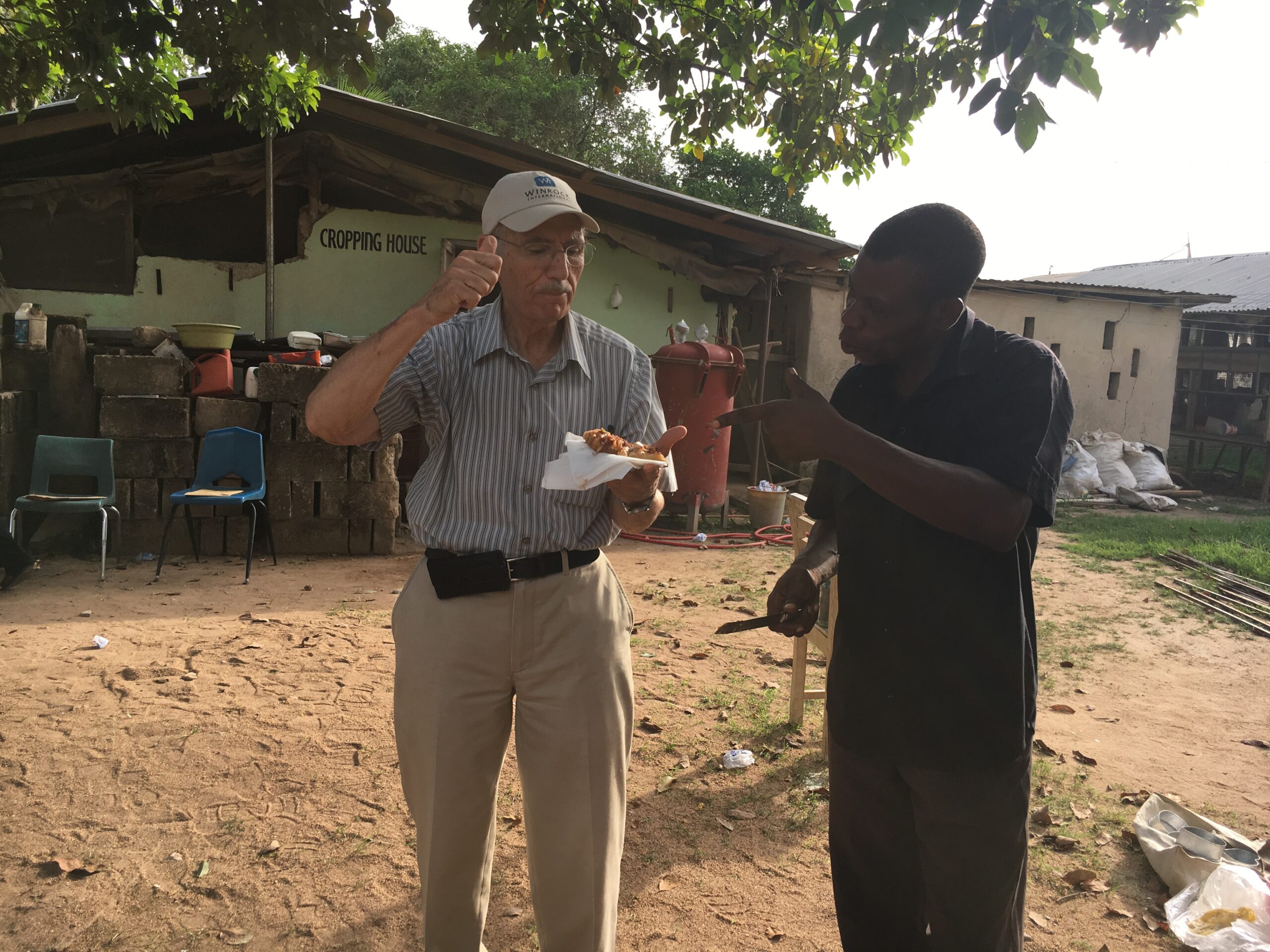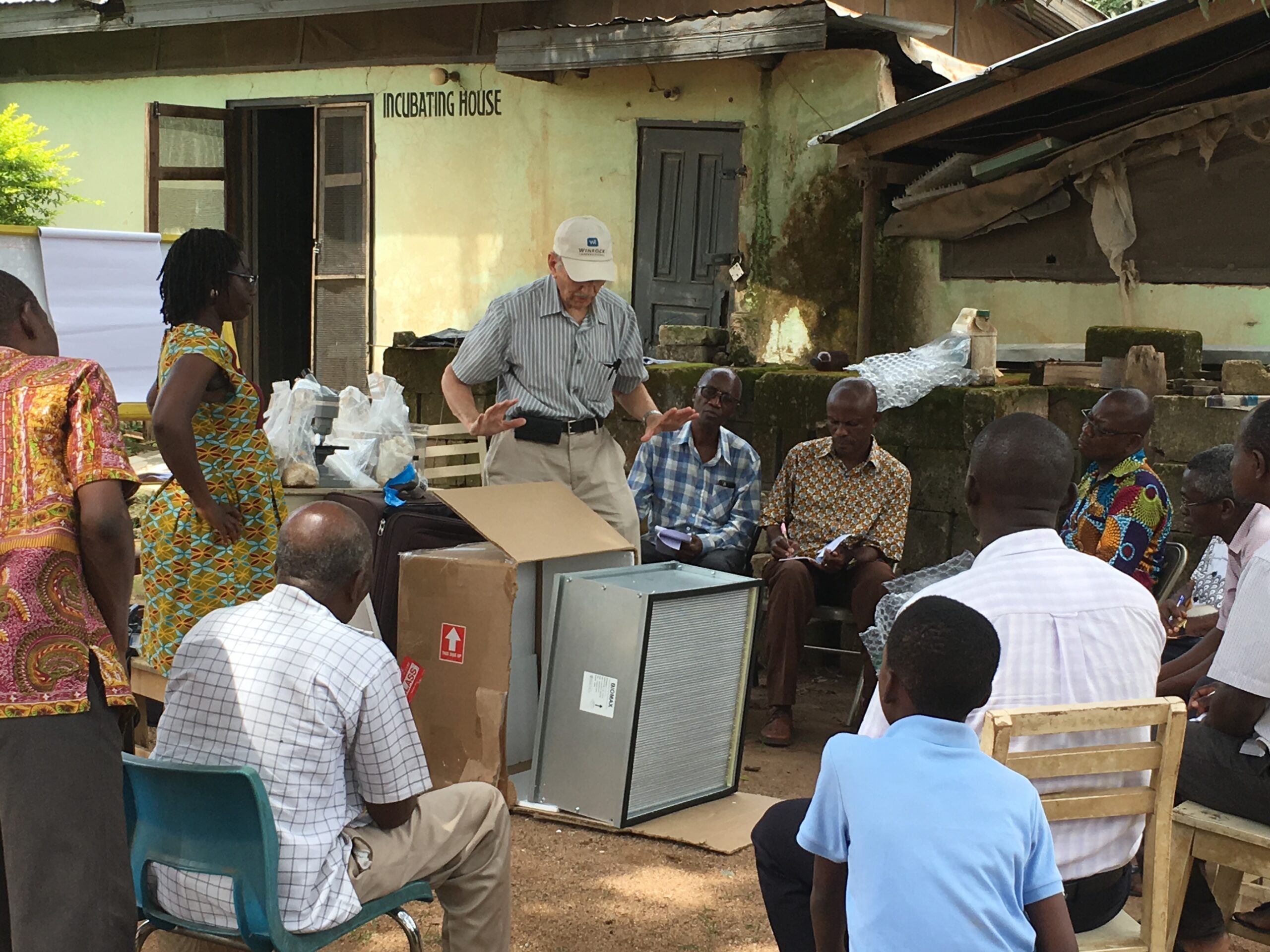
Volunteer Post
Reaching Out
The Wonderful World of Volunteering in Our International Communities
Dr. Khalid Hameed
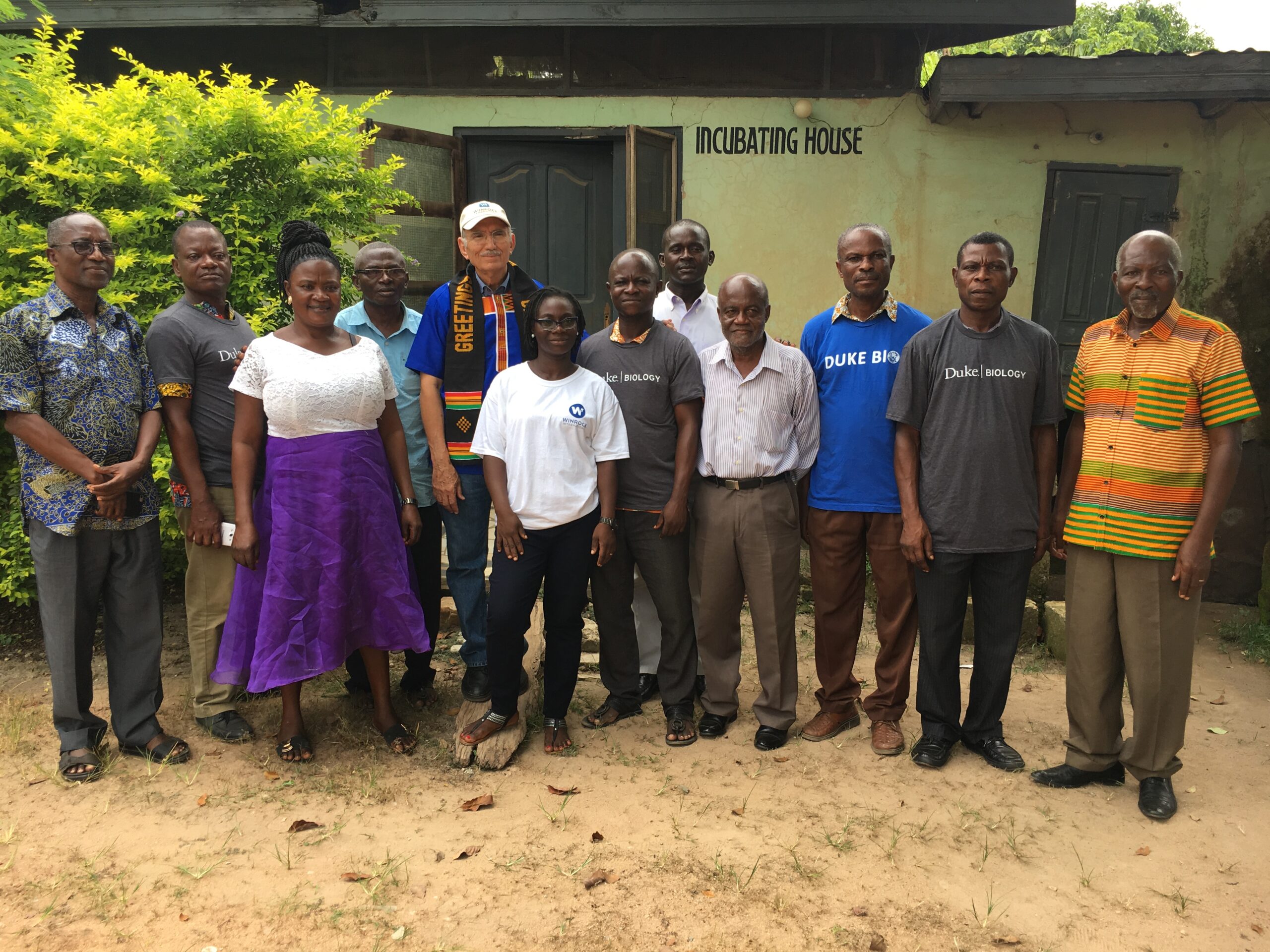
As I am stepping into my eighties, I recognize nothing more rewarding than being associated with scientific research and being able to reach out and help our society and the international community. The latter became possible for me via the wonderful oyster mushroom. I am thankful for the Farmer-to-Farmer (F2F) program, funded by USAID, for opening up the wide world of serving and helping my fellow human beings in developing communities improve the quality of their food enriched with mushroom protein.
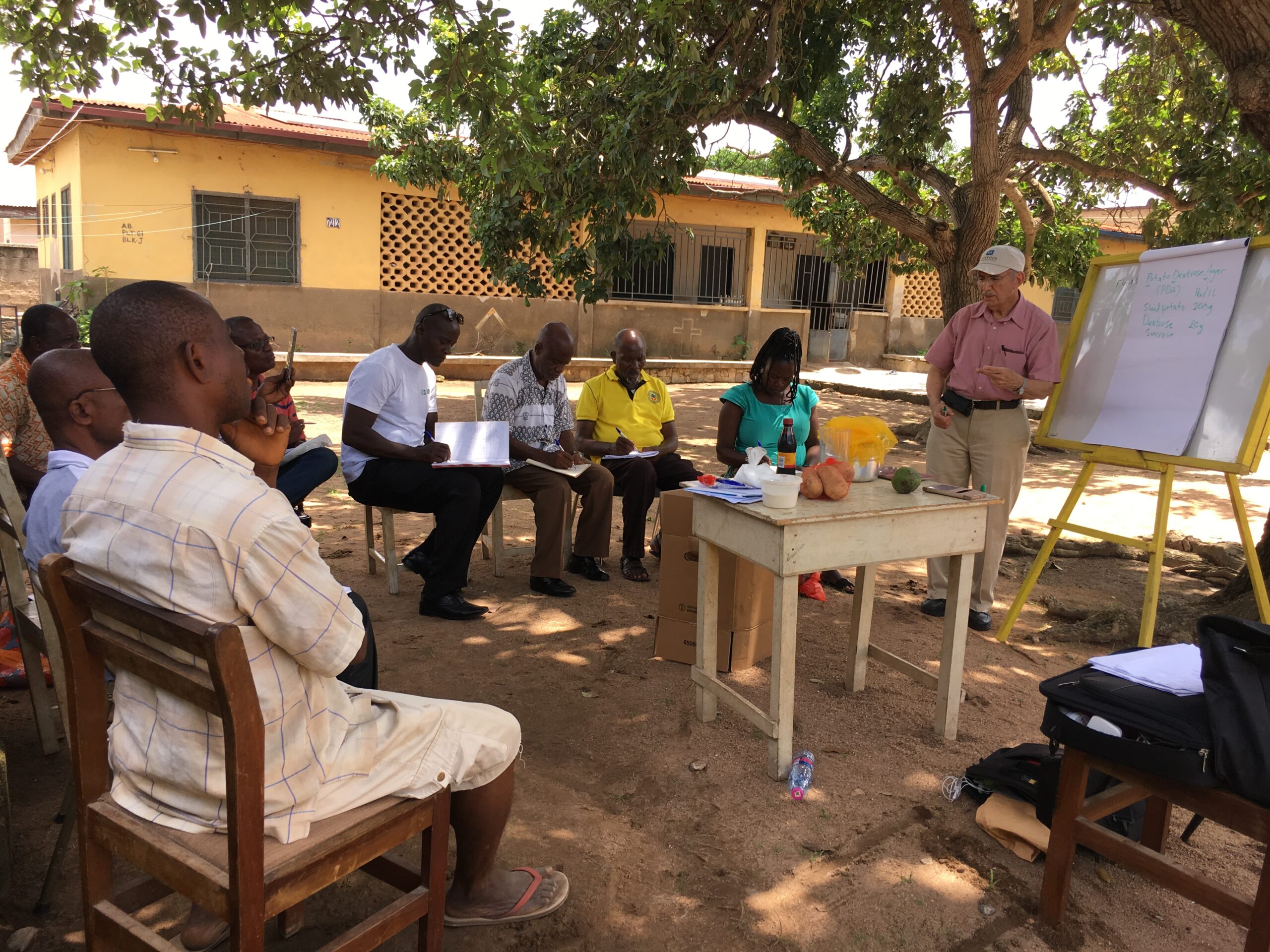
This time it was in Kenyasi in the Ashanti region of Ghana, Africa. This was my third assignment in Ghana. The wonderful oyster mushroom is lending itself for cultivation and fruiting against all the odds of unfavorable conditions. The group I trained is a small association of mushroom growers and they are highly motivated and interested, but they are in need of more technical skills when growing crops of this kind. For many years they used narrow neck soda bottles for spawn preparation and small heat resistant plastic bags for the partially composted sawdust as a substrate for cultivation. It works but was rather inefficient, slow and cumbersome. Then they reached out for training.
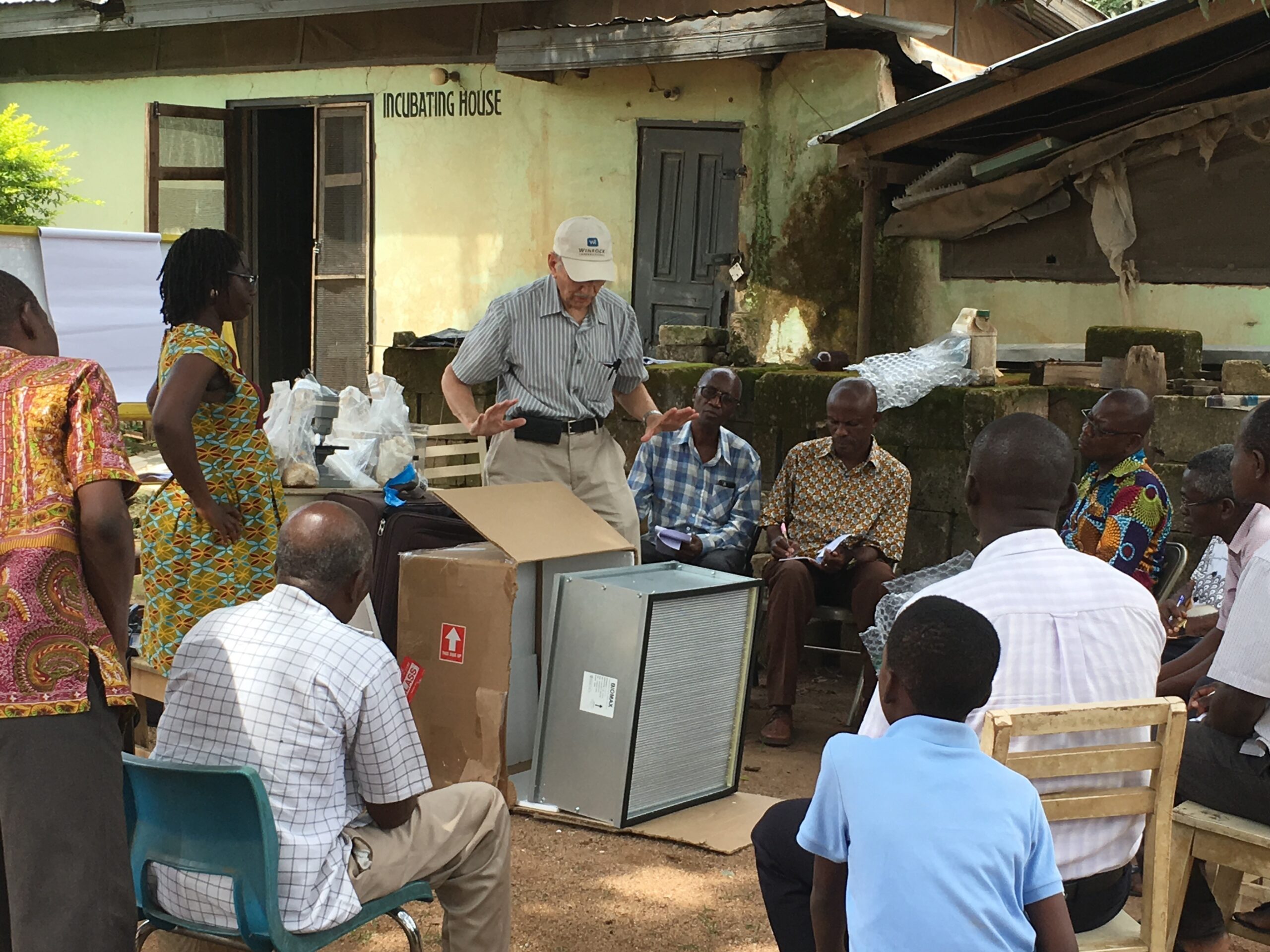
We adapted the small heat resistant plastic bags of theirs to be spawn bags instead of the soda bottles and worked together to increase their awareness of and ability to use other plant materials readily available in their environments such as banana leaves, and coconut husks. Of course, other kinds of hay, grain plant stalks, and straw are also useful. Specifically, this nation is becoming self-sufficient with rice cultivation making rice stalks their primary alternative as a substrate for mushroom cultivation. The training was mainly held in an outdoor classroom, often moving inside to the group’s mushroom incubation room. So it allowed the participant’s good exercise each time they had to move their chairs back and forth.
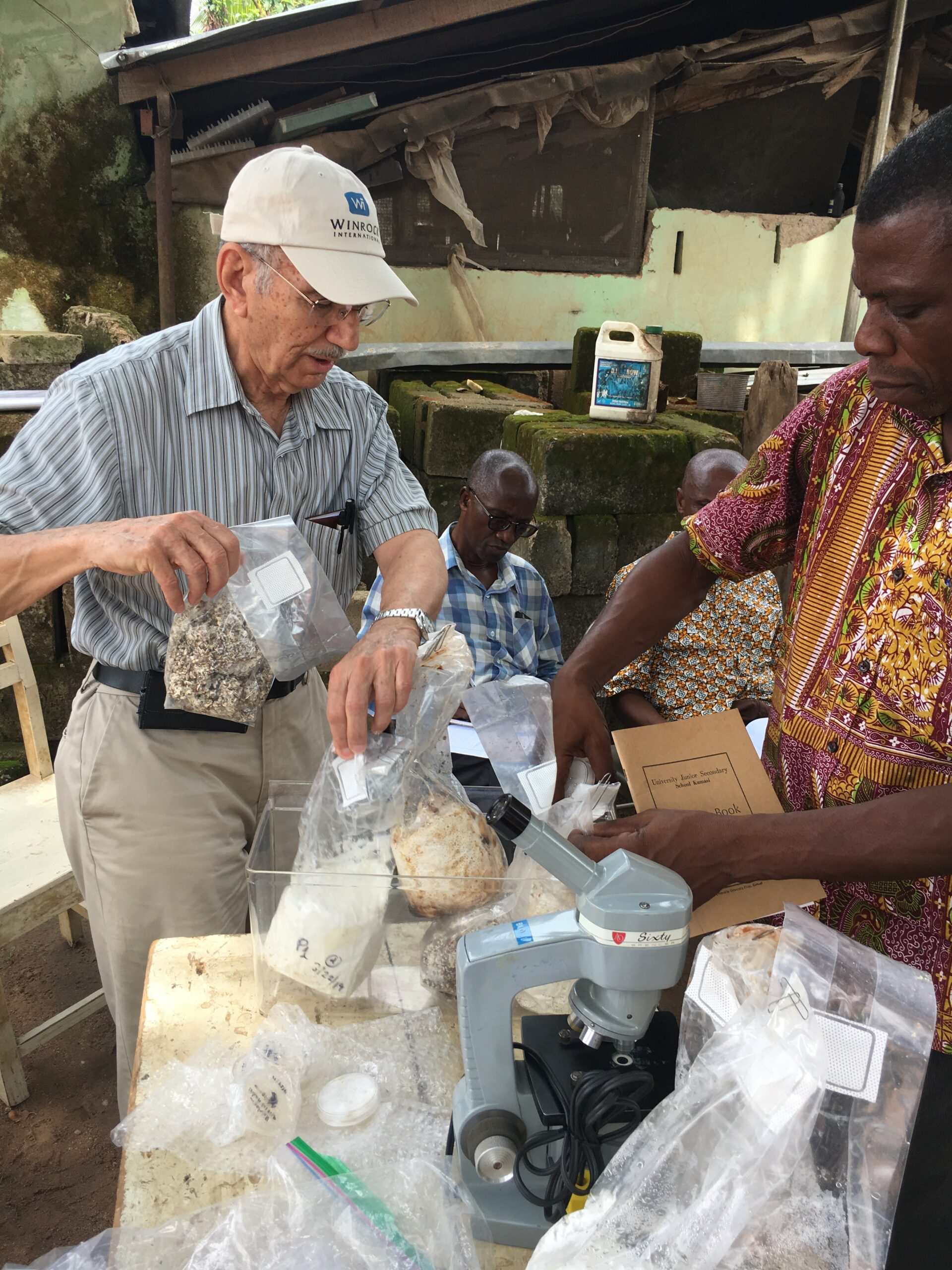
The presentations were centered on discussions rather than just a one-way lecture. The group particularly liked using the flip paper chart as it will stay as an open document for them. We enjoyed making a mushroom pie, mushroom pizza, pickled mushroom, and mushroom kababs, using their high tech charcoal oven.
